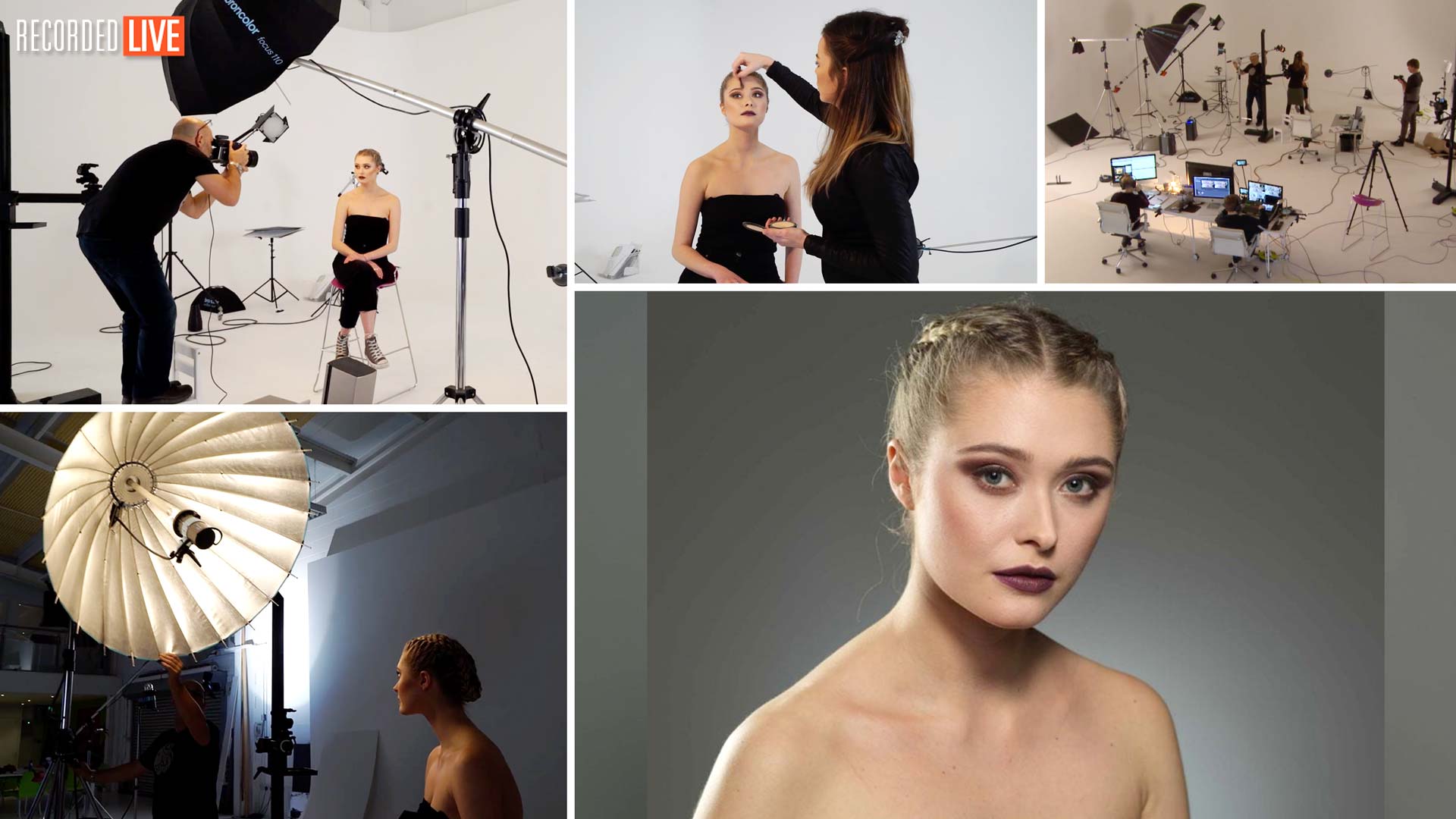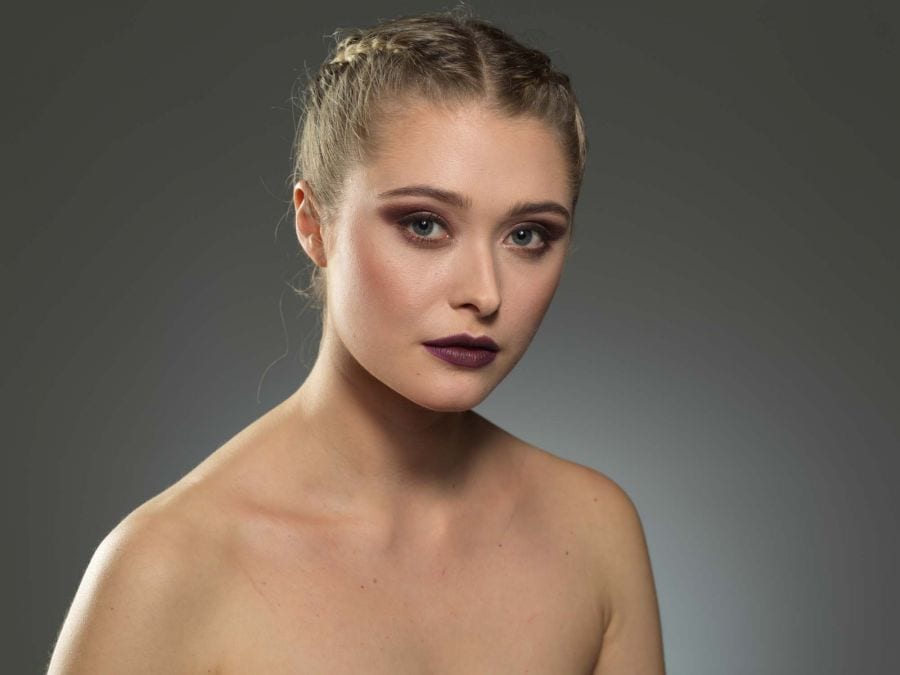Beauty Lighting Techniques
Beauty images traditionally make use of hard lighting, but it can be tricky controlling shadows, textures and contrast to ensure minimal imperfections in the image.
In just two hours Karl covers all you need to know about beauty lighting – from makeup requirements to lighting angles and post-production requirements – and shows you how to achieve a great beauty portrait using just three lights.
He clearly explains what modifiers are best to use, how to use them, how to reveal texture (and how much to reveal) and how directional light can have a great impact.
He also demonstrates a number of alternative lighting settings, explaining how just minor adjustments in lighting can make a difference and why it’s important to understand the inverse square law in order to achieve the best possible results.
This is an information packed show that will change the way you understand both beauty images and hard light.
- What is beauty photography
- Lighting styles for beauty photography
- Controlling hard light sources
- A guide to lighting modifiers: How to achieve hard light
- How to control shadows
- The inverse square law: What it is and the impact it has
More in-depth information on many of the topics covered in this live show can be found in our Portrait section. There is also a useful guide to parabolic reflectors and their effects in our blog.
Questions? Please post them in the comments section below.



Comments
hello Karl,,ahahah i am laughing now every time ppl ask about light meter:):):)..
i have a question though which you partially answered in this tutorial…so i just subscribed to ur channel a couple of weeks ago..i do wildlife..so now its a new challenge for me to be able to control light where in wild life u basically can’t at all..even position…i was going to get broncolor lights…but i then went for profoto..cos smaller, lighter and easy to take with me in safari if needed..u know B 10 and B10 plus…the thing is that u can’t have a bare bulb with those… i saw that with the equivalent of the focus 110 but profoto (they are actually the same) i can’t get the same effect as you also showed in your legs tutorial…do you have any suggestion to overcome this problem?…
thx a lot and you are a fantastic teacher…and ur annual subscription fee its such a bargain..:):):)
Hi Fabrizio, thank you. You should be able to get some sort of dome diffuser attachment to go on the end of the B10 that allows it to work like a bare bulb.
Hi Karl, it looks like you put the para up around 3-4m high and about same distance from the model (and in general). If you only have a lower ceiling (eg 2.4m) would that cause problems? For beauty and fashion, would you recommend still having at 45 degrees and compensate with different distance to the model or would it not make much difference?
Hi Cameron, I’d say 2.4 is going to be a bit low for something like a Para 133 but you’ll get away with a Beauty Dish. You can’t really move the 133 further away and lower as it will become a lot smaller from your subjects perspective and less effective.
Many thanks.
Hi Karl,
When you introduce a second point light source you mentioned that you will also be introducing a second set of shadows, say for instance you have one light on one side and one light on the other side of a model. With my current understanding of light so far, is this only relevant if the side of the light fall off is darker than the light source that is being introduced to it? I don’t understand. I think of this in my portraits sometimes when introducing a fill light on the opposite side of the main light with the concern I may see a second shadow but I have not noticed an issue…yet! But I have come unstuck once with double shadows in a large group shot when I used two flash guns placed on either side of the group, which as you explain would be small point light sources. Is this only because they were creating hard light being small light sources? And am I correct in understanding that with a softbox or large light source, cross shadows or directional shadows are dramatically reduced and therefore not a problem when introducing lights on opposing sides for portraits. Sorry for the long question.
Kind regards
James
Hi James, you are correct in that the apparent size of the light from the subjects perspective is important with regards the type of shadow. So an ant photographed with a speedlite very close to it would an apparently large light from the ants perspective and it would be soft light on the ant as the light would be wrapping all around it. If it was far away this would not be the case and the same goes for any light that we use with any subject, it is the apparent size to the subject that is important. The biggest light source in our solar system is the sun, we know the sun is huge, but it is so far away that it is apparently small and will therefore cast a shadow (even for an ant). Of course if it is overcast then we create a large apparent light source like a giant softbox close to our subject and then very little shadow. So that’s the first thing to understand about shadows. The second point relates to the strength of the second or third light and their spread, if the second light is very weak compared to the first light then it will have minimal shadows because the first light from the opposite angle will be putting light into any shadows and therefore making them indiscernable. Watch the recent live show on the Handbag shoot which will give you some great ideas for shadow control and global illumination. Cheers Karl.
Enjoyed the show. I just tell my beloved Sekonic that short boys don’t use light meters…
Ha Ha short boys would tell you to put it on ebay and use the money for something more useful 🙂
I usually have my meter on the table next to me when I’m watching you climb around changing your power settings. If you say something rather nasty about meters, mine will turn itself on – display the letters “Karl Taylor” and start flashing E R R O R. After about 4 seconds it shuts itself off. Odd behavior from such a usually nice meter. 🙂
This live show really helped me understand which lights and modifiers are better suited for different situations and more importantly… why those choices. Thank you Karl and team! ?
Thank you Karl. Although I couldn’t watch it live, I really enjoyed the tutorial. As usual you have the capability to easily explain any concept. Happy New Year.
This is once again a great show.
Thx Karl
thank you for so much detail, i enjoy the show. hope you and your family also your team have a great amas & new year .looking forward to next live show
hello karl i want to know as we know that the different light modifiers make different effect on the skin, but here i confused with bare bulb and the inside fash tube fire from the light make same highlights on the skin? Because the shape of bare bulb is different and the flash tube is different shape, as if we shoot on modelling lamp or strobe flash is make same highlight effect ?
Hi Jaspreet, yes you are right the flash tube is a slightly different shape to the modelling light so it does give a different result. Check out this live show to see some tips on that https://visualeducation.com/course_video_page/live-broncolor-how-to-with-karl-taylor-urs-recher/
great light thank you.
Shall I ask how can I download the live shows as well as other videos on the website for my membership archive?
Love it
Great show!
Hi Karl!
I always enjoying your simple and really usefull tips and techniques.
Thank you.